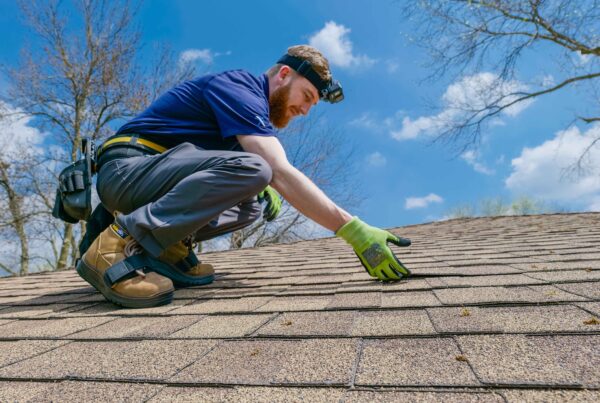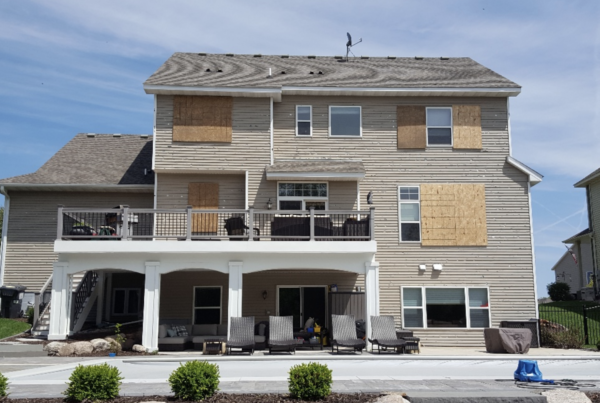Your roof has a pretty important job to do. It’s your first line of defense against all weather related elements and a critical part to the overall integrity of your home.
Minnesota’s intense weather is definitely your roof’s most powerful nemesis! From snowstorms to high winds to hail, storms can be incredibly damaging to your roof. Keep reading to find out the various types of storms that tend to cause the most damages when it comes to Minnesota storms.
Hailstorms
Hailstorms usually leave behind evidence of their wrath. We’ve all seen broken windows, dented car hoods, cracked siding, mashed plants and even some missing roofing shingles. However, there could be some more subtle signs when it comes to your roof.
Regardless of the roofing material used, hail can create small fractures in your shingles and weaken your roofs structure as a whole. Over time, this can lead to larger shingle cracks and tears. In addition, depending on the size of the hail and the intensity of the wind and storm, sections of your roof could result in even more major damages if not repaired right away. Think about it. Your roof just got pummeled over and over again by hard ice balls.

How can you catch this before it turns into a serious problem?
Make sure the roofing material you’ve chosen for your home is strong, durable, and always make sure to have your roof inspected! Our roofing inspections are free and you can get a little peace of mind.
Windstorms
When your roof goes through a windstorm or extreme winds, it can loosen the tiny granules on roofing shingles that help keep water out. Strong enough windstorms could also lead to missing shingles down the road, especially if your roof hasn’t undergone a recent inspection. Missing shingles definitely leaves your roof vulnerable to various elements, so best to access any small roofing damages before they become a major problem.
What should you do? Inspect your roof and make any necessary repairs right away. Be careful if you’re doing it yourself, as professional inspections are preferred so nothing is missed.
Rainstorms/Thunderstorms
This one seems pretty obvious but needs to be included. Rain is water, and water is wet. Your roof is regularly exposed to these kinds of conditions and after a while it can certainly take its toll, especially if other weather related events are mixed in.
Take a peek at “Common Signs of a Bad Roof” to know exactly what to look for!
Snowstorms
The most common issue in Minnesota when dealing with snowy roofs are ice dams. Ice dams are large ridges of ice that form at the edge of a roof or gutters, and prevent melting snow from running off the roof. When water can’t runoff the roof, it can back-up and this is when the problems arise.
Remove snow from your roof after each storm as best you can, as this will eliminate one of the needed components for ice dams. In the unfortunate event that you discover ice dams are already present, DO NOT start hacking away at them yourself. Ice dam removal should be done by a professional only, this is not a DIY job. Professionals will use the process of steam removal since it is most effective, non-damaging, and much more quiet for your neighbors.
Trees
We realize that trees are not a weather element, but during weather-related events, trees can be extremely damaging to your roof. If you notice any branches hanging over your roof or touching your roof, it is very possible the limbs of your trees are rubbing off the small granules on your shingles or even poking small holes in them.
One way to remedy this is to prune your tree branches back. A professional arborist is your best bet to making sure that branches are pruned properly and safely. If you tend to do home maintenance yourself, keep in mind that heavy pruning is done in the tree’s dormant season for best results and make sure you’re using proper pruning techniques with the proper tools.
The Bottom Line
Weather and storms take a damaging toll on your roof. Make sure that you’re getting your roof inspected after major storms and get the necessary repairs done as soon as possible.
Are you concerned about your roof? Is your roof storm damaged? We can certainly help. For questions or inspections, get in touch with us today.








